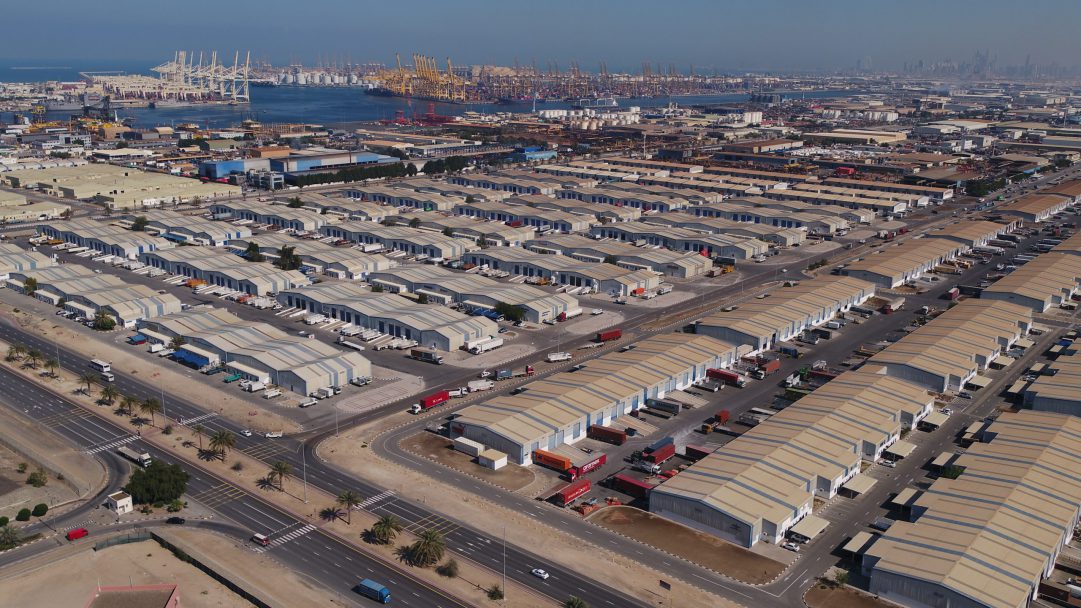DP World and CDPQ, a global investment group, announced an investment of US$5 billion in three of DP World’s flagship UAE assets.
CDPQ will invest US$2.5 billion in the Jebel Ali Port, the Jebel Ali Free Zone and the National Industries Park through a new joint venture in which it will hold a stake of approximately 22%[2], with the remainder of the transaction being financed by debt. Other long-term investors will have the opportunity to acquire an additional stake of up to US$3 billion. The transaction implies a total enterprise value of approximately US$23 billion for the three assets.
The Jebel Ali Port, Free Zone and National Industries Park together comprise a best-in-class group of infrastructure with a solid long-term track record of growth. Combined, they form a world-class integrated ecosystem for the supply and logistics chains of over 8,700 companies from around the world, serving more than 3.5 billion people globally. The three assets generated pro-forma 2021 revenue of US$1.9 billion.
Jebel Ali Port (JAP) — A leading international gateway port and the second largest outside of Asia, ideally located to serve the East-West trade corridor through its connectivity to 150 cities globally via 180+ shipping lanes.
Jebel Ali Free Zone (JAFZ) — The largest free zone in the Middle East and one of the largest in the world. It is home to companies from 140 countries, including approximately 150 Fortune 500 enterprises.
National Industries Park (NIP) — A 21 sq. km area designated for manufacturing and processing companies.
The three assets will remain fully consolidated businesses within the DP World Group, and day-to-day operations, customers, service providers and employees will not be affected.
Sultan Ahmed Bin Sulayem, Group Chairman and CEO, DP World, said: “We are delighted to announce the broadening of our partnership with CDPQ. The DP World and CDPQ co-investments have been very successful, thanks to our complementary expertise and long-term investment horizon. We believe this new partnership will enhance our assets and allow us to capture the significant growth potential of the wider region. The transaction[3] also achieves our objective of reducing DP World’s net leverage to below 4x Net Debt to EBITDA and this has been achieved despite the challenges of the pandemic and recent global economic conditions. The significant strengthening of our balance sheet, the continued resilience of our business, diversity in our portfolio and continued focus on supply chain solutions will support our target of achieving a strong investment-grade rating for the Group. Overall, we believe this transaction provides a strong platform for the UAE assets to meet their long-term growth objectives, while the stronger balance sheet supports the Group’s wider end-to-end supply chain solution strategy, which will drive sustainable value for all DP World stakeholders.”
Emmanuel Jaclot, Executive Vice-President and Head of Infrastructure at CDPQ, said: “This investment in Jebel Ali is another great illustration of the partnership between CDPQ and DP World, which now spans four continents and eighteen terminals. Today, we are pleased to deepen our long-standing relationship with a world-class logistics and supply chain operator by investing in this strategic trade infrastructure, one that will play a pivotal role in the evolution of the global economy. DP World is well positioned to provide innovative solutions to their customers worldwide, and we welcome this opportunity to invest in a best-in-class group of infrastructure that provides CDPQ with exposure to new fast-growing markets and trade routes in Africa and South Asia.”
Tranche 1 (US$5 billion) of the transaction is expected to close in the second or third quarter of 2022, and tranche 2 (up to US$3 billion) is expected to close during the fourth quarter of 2022.

























